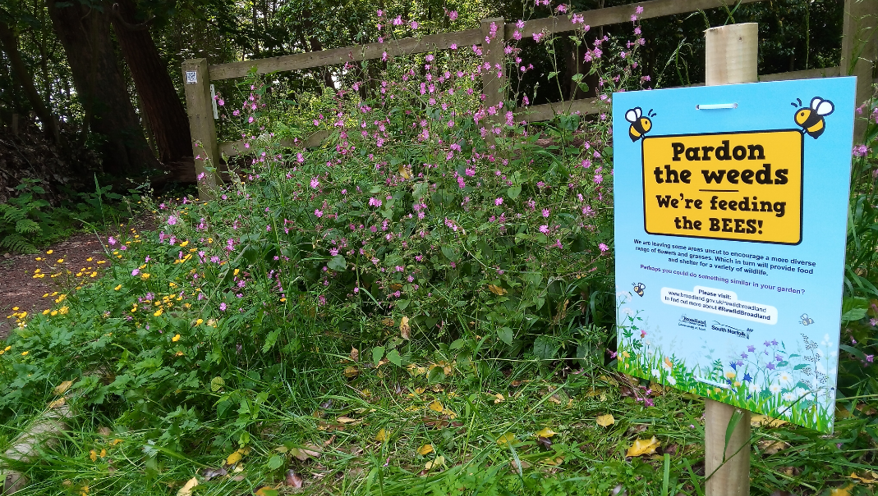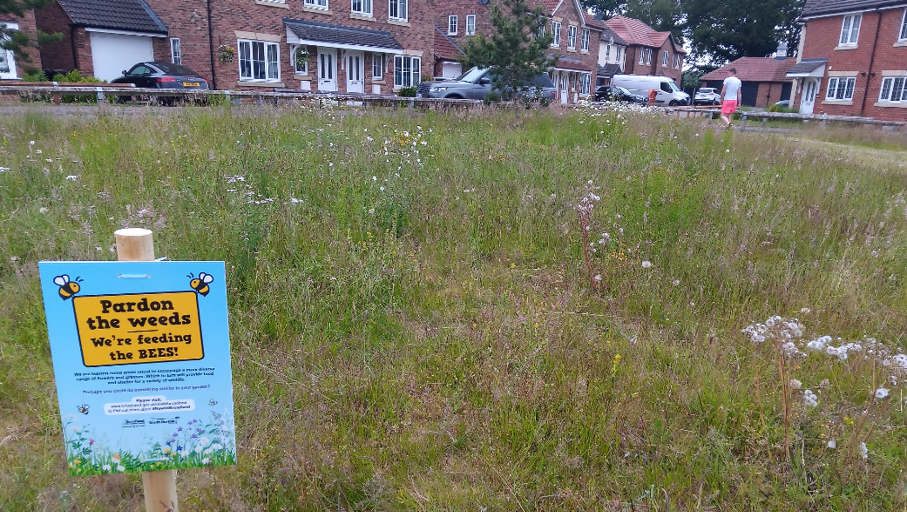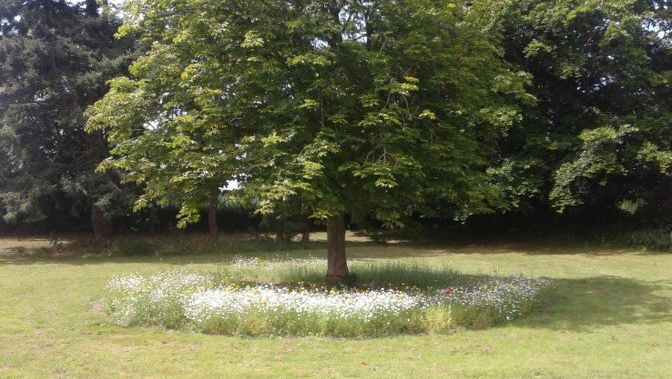Wildflowers - South Norfolk + Broadland District Councils
Insect-rich wildflower havens are springing up across South Norfolk and Broadland.
Since 2019, 30 sites have been introduced in Broadland, with a further 10 in South Norfolk.
Project Manager Polly Cobb says feedback from residents has been overwhelmingly positive, and that more sites are planned for the future.

The plan had always been to develop a model which could be rolled out more widely across district amenity land. There was the additional daunting prospect of repeating part of the initial creation process in future years to maintain the prevalence of wild flower species over grass in the plots. So, whilst the Carrowbreck Meadow plots were a success in terms of increasing biodiversity on a small scale, they didn’t provide a sustainable approach to be rolled out.
From small beginnings, re-wilding grassland in Broadland and South Norfolk districts has developed into a popular established feature of amenity land, that has sparked learning and new ways of engaging with residents and the wider community. This re-wilding adventure began in April 2019, with Broadland’s creation of wildflower meadows as a trial at Carrowbreck House in Norwich. Members of staff across the two councils volunteered their time to pilot creating three small wildflower meadows from scratch.
As those of you who have ever attempted to create a wildflower meadow this way will know, it’s a labour and time intensive exercise. 200 plus man-hours later, the areas had been cleared of existing grass and weeds. The top layer of soil was also removed to reduce soil fertility, thereby attempting to hamper the re-growth of grass and other prolific plants, and give the wildflowers a chance to establish themselves.

Undeterred, in the spring of 2020, the team decided to trial a less intensive re-wilding approach, attempting to find a balance between the aim of increasing biodiversity, but with an approach that could realistically be applied at sites across the district. Twelve sites were selected across Broadland District Council and the existing grass mix was allowed to grow without regular mowing through the spring and summer. Margins and pathways were created through continued cutting, to ensure the areas were still ‘managed’ and still looked like they were being managed for local residents.
There was some caution in case locals objected to the trials, but in fact the areas of re-wilding proved to be popular with the majority of people who supported the idea of the trial. Although the sites didn’t re-create the rich biodiversity of the Carrowbreck House meadows, there was a noticeable increase in plant species and certainly an improved habitat for pollinators.
On the basis of the success of the 2020 trials, in 2021 Broadland and South Norfolk councils expanded the scheme to rewild 30 district sites in Broadland and introduce 10 in South Norfolk. A social media campaign was launched using Facebook, Twitter and the councils’ website, encouraging district residents to join in by posting their own rewilding pictures. Alongside promoting the councils’ actions, the campaign urged residents to join in with a no-mow patch of grass in their gardens or growing some wild flowers in a pot if space was limited. In addition to social media, tried and tested on-site signage was used to ensure residents local to the rewilding sites knew what it was all about. The message was that the sites were being managed differently for a reason – not just being left or neglected.

The campaign was a success, with lots of positive feedback from the community and enquiries in 2022 to check the re-wilding would be repeated and extended. One resident commented that an amenity area had been transformed “from a featureless area of grass into something truly inspirational”. Data on the outcomes in terms of biodiversity indicated success here too: 43 different wildflower species were observed across the re-wilding sites, including
Bee and
Pyramidal orchids.
This information was gathered by a member of the council ground staff team who is an enthusiastic botanist. As well as having access to a valuable in-house source of expertise, this also created a chance to recognise the previously uncelebrated talent of staff. Based on this success, there was no question that the campaign would be continued and embedded this year. Additional sites in South Norfolk have been included in the scheme, alongside the districts’ existing re-wilding footprint from 2021.
The ambition to expand re-wilding activity is reflected in the councils’ commitments and actions. A long-term investment in a specialist cut and collect mower speaks of the on-going commitment to re-wilding as ‘Business As Usual’. There is lots of potential attached to this increased technical capability: Up-skilling staff, being a source of expertise within the districts to advise and encourage green development at the most grassroots levels of local economic, and business activity.

In terms of spreading the message about re-wilding, there are plans to reach-out to local councils at parish and town level, to encourage re-wilding on community land here too. In reality, there’s an acknowledgement that this activity is already well underway! So the councils’ are keen to support and celebrate what is already happening locally, as well as encouraging new trials, utilising their districts-wide reach to support connections and cross-fertilisation between pockets of local enthusiasm, and to develop an overview of activity to reflect back to the community.
Celebrating and working with local projects and partnerships, large and small, urban, suburban and rural is integral to the districts’ approach to re-wilding in a sustainable and inclusive way. As well as re-wilding, Broadland are also offering grants and assistance to community environmental projects, mainly tree and hedge planting, but always eager to support ideas being generated within the community.
For more information, click here:

WildEast Blog

Powered by LocaliQ
Follow Us
SIGN UP FOR NEWS & UPDATES
Newsletter Sign Up
Thank you for signing up to our newsletter.
Please try again later.
Privacy / Terms & Conditions / Sitemap
